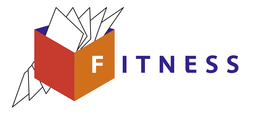☰ GUIDELINES ENVIRONMENT ☰
🙋Foreword
The guidelines presented cover the production of raw materials used in food packaging. Currently, the following hot topics are not covered yet by the guidelines (but are included in lectures): recycling (♻), reuse (☕,🥤,🍫,🍿), material substitution (♳♴♵♶♷♸♹♺), waste management (🚮), composting (🌳), biodegradation (🌦).
🏭🌍Good Manufacturing Practices to Reduce Environmental Impacts of the Production of Materials
📚documents: 3 | ⚖️ Integrated Pollution Prevention and Control (Industrial Emissions Directive (EU) 2010/75)
The documents (click on the images) are too large to be displayed on single page, they are split in several parts
| 📕Manufacture of Glass | 📄481 pages | 🏛️🇪🇺 JRC, Ispra, 🇮🇹 | 🔉English | 🔝 🔖This Best Available Technique (BAT) for the Manufacture of Glass covers the following activities:
| |
| 📙Iron and Steel Production | 📄623 pages | 🏛️🇪🇺 JRC, Ispra, 🇮🇹 | 🔉English | 🔝 🔖This Best Available Technique (BAT) for the Manufacture of Iron and Steel covers the following activities:
| |
| 📗Production of Pulp, Paper and Board | 📄906 pages | 🏛️🇪🇺 JRC, Ispra, 🇮🇹 | 🔉English | 🔝 🔖This Best Available Technique (BAT) for the Manufacture of Iron and Steel covers the following activities:
Important issues for the implementation of Directive 2010/75/EU in the pulp, paper and board industry are the emissions to air of nitrogen oxides, sulphur oxides, dust, total reduced sulphur and ammonia; emissions to water of organic carbon, suspended solids, nitrogen, phosphorus and adsorbable organically bound halogens. The BREF contains nine chapters. Chapters 1 and 2 provide general information on the pulp, paper and board industry and on the common industrial processes and techniques used within the whole sector. Chapters 3, 4, 5, 6 and 7 correspond to the following specific sectors: kraft (sulphate) pulping process, sulphite pulping process, mechanical and chemimechanical pulping, processing of paper for recycling with and without deinking, and papermaking and related processes. For each sector, these five chapters provide information and data concerning the applied processes and techniques; the environmental performance of installations in terms of current emissions, consumption of raw materials, water and energy, and generation of waste; the techniques to prevent or reduce the environmental impact of installations; and the emerging techniques. In Chapter 8 the BAT conclusions, as defined in Article 3(12) of the Directive, are presented for the pulp, paper and board industry. Chapter 9 is dedicated to concluding remarks and recommendations for future work regarding the sector. |
These documents were not produced by the consortium and are made available through the platform for education and training purposes. They are not exhaustive and they cannot be used as a sole source of information.
  |
PROJECT FITNess - funded by the European Union's ERASMUS programme (contract 2017-1-FR01-KA202-037441) Food packaging open courseware for higher education and staff of companies Partners: Croatia (UZAG-PBF), France (ACTIA, LNE, AGROPARISTECH/INRA, AGROSUP DIJON), Germany (TUM), Portugal (UCP), Spain (CSIC) - Report issues |